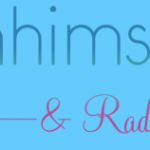Explore the Ahimsa of your own mind:
How often do I experience anger? Do I anger easily? Do I repress anger when I experience it, or do I find a positive outlet for the suppressed energy? Where does the anger come from and what does it trigger?
On a subtle level, you may experiment with the following questions:
What is hurting my happiness? What is hurting my peace of mind? What is hurting my dream and contentment?
I started making connections between my parents’ feedback towards me and my inner thoughts. Growing up, I was never overly praised, although I do believe that I had made some great achievements. Nor was I really punished for any mistake I made. Okay, maybe when, as a youngster, I sprayed graffiti on the wall of the National Theater. But what about the constant negative inner voice that my roommate experienced? All the verbal violence towards herself? Dr. Lisa Firestone, the author of Conquer Your Critical Inner Voice, explains that one’s negative inner voice most commonly originates in early childhood. “As infants, in the process of bonding with our parents, we absorb and take in their attitudes toward us. These internalized antagonistic attitudes form the basis of the critical inner voice.”5 All the negative self-talk, comments, judgments, and criticism are a direct result of the defenses we developed as children to cope with stressful or painful events. This may be very much how we live our lives and what can prevent us from reaching our true potential.
Ahimsa Yoga What Is Ahimsa? Photo Gallery
Inner voices become inner dialogues, and often they are conflicting dialogues. Have you ever caught yourself waiting for a phone call, all calm and relaxed with a positive outlook? And now the phone call is late, and the mind is becoming agitated. You’re asking yourself, “What happened? I thought he was interested in me!” Now the inner voice starts gearing up: “How could he have been interested in you? You were wearing a stupid blue dress and talked about boring things the whole time.” The next minute: “But he sent that really nice massage after our beautiful dinner.” The senseless conversation in our head may reach many impossible outcomes. We don’t even realize that half an hour has flown by and the person’s message is sitting in our inbox: “I’m stuck in a meeting. Call you shortly.”
AHIMSA
“Non-harmfulness (harmlessness). To not wish harm to any living creature — not even to any lifeless object. This doesn’t mean to not harm or kill, which can sometimes be inevitable, such as when one eats meat or even plants, or accidentally steps on bugs. Ahimsa is about the intent, rather than the action itself. It’s an attitude of universal benevolence. ”
For this very reason, we call our minds in yoga the monkey mind, where our thoughts are constantly chattering and jumping from branch to branch. Buddha described the human mind as being filled with Drunken Monkeys, jumping around, screeching, chattering, carrying on endlessly. I really like the term “Drunken Monkeys” so I will use this to refer to “inner voices.”
Drunken monkeys have different natures. They may be calm and caring, or they can get intense and loud. Depending on the time of day, our external world, our state of mind, our breathing, emotions, and the feelings we experience can affect the attitude of these monkeys. Moreover, what we eat and drink can greatly affect their nature. It’s important to know that all humans display five different types of electrical patterns or “brain waves” across the cortex. The brain waves can be observed with an EEG. They range from a very low-level activity found in Delta waves or a deep sleep state to a Theta or lucid dreaming state, to Alpha or a creative, relaxed state, to Beta or a high-functioning state of the brain, to Gamma, or the highest functioning of the brain. Each brain wave has a purpose and helps serve us for optimal mental functioning. Each serves a purpose in helping us cope with various situations – whether helping us process and learn new information or helping us calm down after a long, stressful day. I really enjoyed Dr. Joe Dispenza’s exploration of brainwave development in his blog Breaking the Habit of Yourself Being Yourself. He described the five brain waves via children’s brain development.
Beta: This state develops between the ages of eight and 12. Beta waves continue increasing throughout adulthood. We generally distinguish between low-, mid-, and high-range Beta. Mid-Beta represents adolescents, and high-Beta represents adults.
Alpha: This state has fully developed by the age of eight. Children start developing a sense of the external world and experiencing the world of reality. According to Dr. Dispenza, children in this age group have a foot in both words. That’s why they can pretend so well. Have you ever noticed your children being in a certain costume and playing the character for hours? We wouldn’t be so good at it…maybe for a few minutes.
Theta: This state starts developing around the age of two until the age of five or six. The frequencies start functioning at a slightly higher level. Children at this stage are living mainly in their inner world as well as imagination and have not yet developed their sense of self. Stereotypes are very important for them
Delta: This state is what babies experience between the age of birth and two. The lowest frequencies can be experienced at this level. There is hardly any consciousness in the way babies zoom in and out of the sleeping state. There is no editing, judgment, or critical thinking. It’s said that we don’t have memories of this state as we don’t have ego or consciousness at this time.






